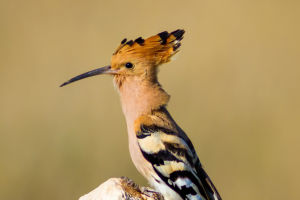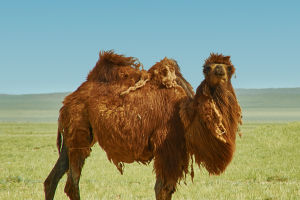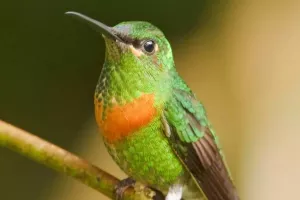The sika deer has a pair of branch-shaped antlers on its round head, and trumpet-shaped ears are hidden under the antlers, as if it is eavesdropping on the surrounding movement, ready to escape at any time.
There are neat and obvious white circular spots on both sides of the sika deer body, which look like plum blossoms from a distance, and these spots gradually disappear in winter.
The sika deer's slender neck stands upright, symbolizing indomitable, wavy waist, covered with light yellow winter hair, which is really beautiful, and the four straight legs seem to condense the strength of the whole body.
Morphological characteristics of sika deer.
The sika deer is 125-145 cm in length, 12-13 cm in tail, 70-95 cm in height at the shoulder, and weighs 70-100 kg.
The head is slightly round, the face is long, the nose is exposed, the eyes are large and round, the infraorbital gland is slit-shaped, the tear socket is obvious, the ears are long and erect, the neck is long, the limbs are slender, and the tail is short.
Coat color changes with the seasons. In summer, the body hair is brownish-yellow or chestnut-red, without downy hairs. There are many neatly arranged white spots on both sides of the back and the lower edge of the body, shaped like plum blossoms.
In winter, the coat is smoky brown with inconspicuous white spots, similar to the color of withered grass. The neck and back of the ears are gray-brown, with a black dorsal midline from the tip of the ear to the base of the tail, a white belly, and a white patch on the rump surrounded by black terry.
Male sika deer have a pair of solid horns on their heads. There are 4 branches on the corners. The brow branch forms an obtuse angle with the main trunk, protruding forward near the base.
The torso is generally curved to the sides, slightly semi-arc, the eyebrows are held forward and upward, and the corners are slightly curved inward, very sharp.
The living habits of sika deer.
1. Character.
Sika deer are alert and quick in action. Timid and easily startled.
2. Hearing, smell and vision.
Hearing and smell are developed, and vision is slightly weaker.
3. Run.
Due to its slender limbs, narrow and pointed hoof tips, fast running speed and strong jumping ability, it is especially good at climbing steep slopes.
4. Living environment.
Sika deer are suitable for living on the edge of mixed coniferous and broad-leaved forests and mountain grassland areas. Habitat changes with the seasons.
5. Activity time.
The sika deer are mainly active in the morning and evening, and they mostly stay in places not far from water sources and rich in food, with an activity range of about 5 to 15 kilometers.
6. Food.
In the morning and evening, eat grass and leaves to supplement salinity.
7. Live in groups.
Sika deer are animals that like to flock, each group consists of dozens of heads. However, it varies with the season.
It's gentle and lively look is really cute.


